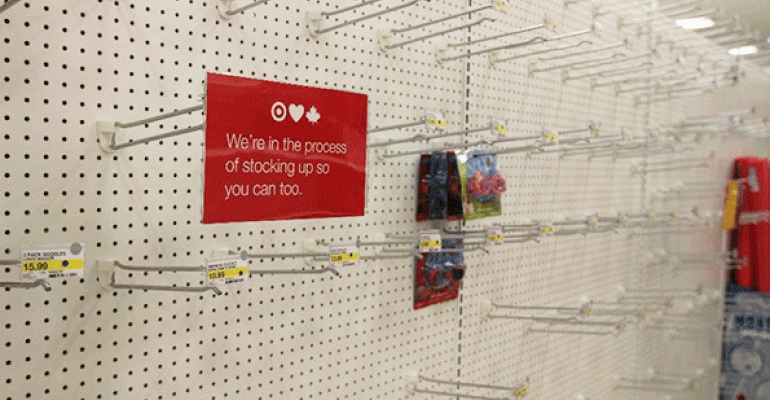In a monumental decision, Target announced that it will pull out of the Canadian market less than two years after a much hyped entry. The magnitude of the loss is staggering: 133 stores, over 17,000 associates and a write-off that is being estimated at over $5.4 billion.
The obvious questions: What went wrong? And how might retailers learn from this?
There are a number of already published commentaries on what went wrong, as this business struggled from the very outset. We’ll boil it down to a few key points:
• An overly aggressive approach. Target acquired the leases from Zellers in Canada and spent about a year upgrading the stores. It opened over 125 stores in 2013, its largest single expansion ever. In a market where it never operated in before! There was no test and learning — just the presumption that they would get it right the first time.
• Adjusting to Canadian tastes. Despite Target’s Minnesota headquarters being not too far from the border, Canadian consumers are different than U.S. consumers. Target had no roadmap and came in with the wrong assortments, with less selection and often higher prices than the U.S. stores, which many Canadian consumers were very familiar with. Markdowns were a huge problem that impacted margins even as stores radically underperformed their US counterparts.
 • Supply chain and systems. The stores were painfully out of stock and higher priced due to poor supply chain planning and systems that did not fully integrate with the U.S. The result was stores that were underwhelming to the Canadian consumer and ones that Target could not efficiently plan for or supply.
• Supply chain and systems. The stores were painfully out of stock and higher priced due to poor supply chain planning and systems that did not fully integrate with the U.S. The result was stores that were underwhelming to the Canadian consumer and ones that Target could not efficiently plan for or supply.
• Competitive conditions. The main competitors in Canada, Loblaw and Walmart, were aggressive in upgrading their operations, store base and competitive stance in advance of Target’s entry. They made certain to not let up as Target’s struggles mounted.
What’s the lesson? In a parallel to Tesco’s failed Fresh & Easy experience in the U.S., we can boil it down to one word: Arrogance. In both cases, these were (and are) world class retailers that often set the standard for operations in their country and the world. They wrongly assumed that their format would be embraced by customers in another country despite customer differences and competition that aggressively defended their turf.
There is absolutely no reason why Target couldn’t have worked in Canada. They took over existing discount boxes, made upgrades and operate a format that is familiar to the Canadian consumer. Had they entered slowly, with care, testing and learning to get it right with the customer, we believe we would be looking at a very different story. As it is, the size of the bet and the ongoing losses dug them a hole they couldn’t recover from. Target estimated that profitability couldn’t be reached until 2021, an eternity in the retail world.
For any retailer, whether it’s opening a store in the town next to yours, a new city, market, state or country, never assume that the business will come your way. Arrogance has brought many once great retailers to the point of oblivion.
Target’s painful Canadian lesson is a reminder that every dollar must be earned.

